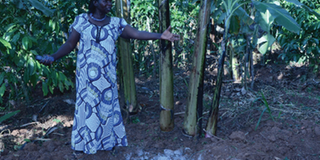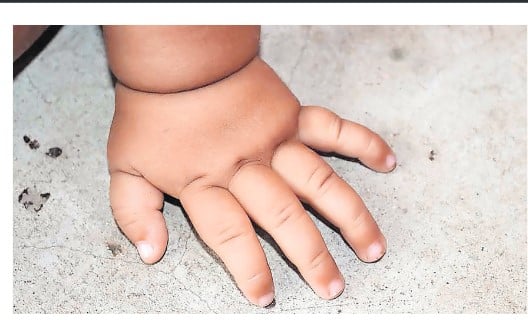Why you should be concerned about soil salinisation

Traditional soil fertility management practices have limitations in reducing salinisation. PHOTO | GEORGE KATONGOLE
What you need to know:
- Accumulation of salts is commong in irrigated soils because of total dissolved solids.
- Salt-affected soils may inhibit seed germination, retard plant growth, and cause irrigation difficulties.
- Saline soils cannot be reclaimed by fertilisers. They are instead reclaimed by leaching salts from the root zone.
Soil salinisation (in Luganda commonly known as lunnyo soils) is an increasing issue for crops grown under irrigation, which could become a more widespread practice in some regions of the world due to reduced or irregular precipitation patterns from climate change.
After years or decades of continuous irrigation, toxic ions dissolved in irrigation water (even if fresh, good-quality water is used) progressively accumulate in the soil, leading to this ‘secondary salinisation’ –caused directly by human intervention.
As Uganda celebrated the World Soil Day early this month, Minister of State for Agriculture, Animal Industry and Fisheries Fred Bwino Kyakulaga explained that says high concentration of salts in the soil is responsible for poor yields as well as rejection of Ugandan agricultural produce on the world market.
“Rather than reclaiming salt affected soils, preventing salt accumulation would be the prudent route to take. Therefore, Uganda will urgently undertake soil surveys aimed at identifying such affected soils and recommending suitable management strategies,” the minister said.
Areas near saline waters like around lakes Katwe and Albert have been identified as some of the most susceptible areas to soil salinisation.
Management
Salinity problems are caused from the accumulation of soluble salts in the root zone.
These excess salts reduce plant growth and vigor by altering water uptake and causing ion-specific toxicities or imbalances.
Establishing good drainage is generally the cure for these problems, but salinity problems are often more complex. Proper management procedures, combined with periodic soil tests, are needed to prolong the productivity of salt affected soils.
According to soil scientists, there are three ways to manage saline soils. First, salts can be moved below the root zone by applying more water than the plant needs. This method is called the leaching requirement method. The second method, where soil moisture conditions dictate, combines the leaching requirement method with artificial drainage.
Third, salts can be moved away from the root zone to locations in the soil, other than below the root zone, where they are not harmful. This third method is called managed accumulation.
Other methods include using crop residue cover to reduce evaporation.
Samson Luwagga, an agronomist formerly at Songhai Model Site in Kampiringisa, Mpigi District, explains that using plastic mulches with drip irrigation can effectively reduce concentration from evaporation.
“Under irrigated conditions in arid and semi-arid climates, the build-up of salinity in soils is inevitable. So, proper management is key in managing salinity,” Luwagga says.
But scientists National Agricultural Research Laboratories (NARL-Kawanda) have been working for several years to incorporate salt tolerance into crop varieties.




